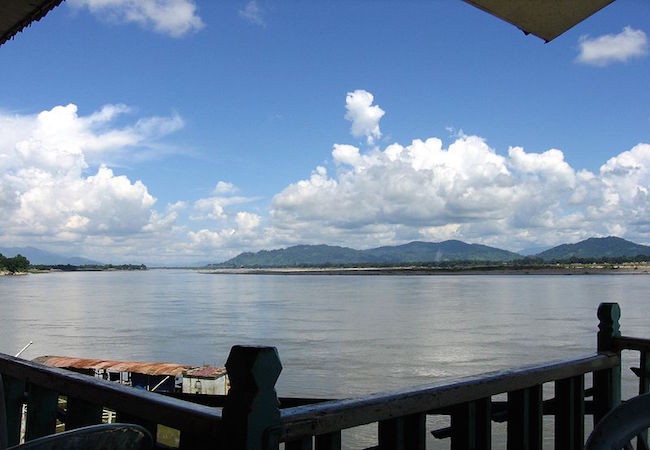
By Rene Wadlow
Deputy Foreign Minister Kyaw Tin speaking to the Myanmar Parliament on 29 June 2017 said “Foreign Affairs Minister Aung San Suu Kyi said that we would not coordinate with the United Nations fact-finding mission, as we have disassociated ourselves from the resolution because we do not think that the resolution is in keeping with what is actually happening on the ground.”
After a March, 2017 resolution of the UN Human Rights Council calling for an independent fact-finding mission, especially to Kachin State, northern Shan State and Rakhine (Arakan)State, the Council appointed Indira Jaising, an Indian lawyer, Radhika Coomaraswamy of Sri Lanka and Christopher Sidotu of Australia to carry out the investigation and to report to the next Human Rights Council session starting in September. Radhika Coomaraswamy has had long experience with the UN human rights structures.
In the past the Government of Burma (renamed Myanmar) has refused to cooperate with UN human rights Special Rapporteurs. Therefore interviews had to be carried out in Geneva and Bangkok. Non-governmental organizations have been able to interview and observe within Burma, crossing the frontier from Thailand to minority areas or on a tourist visa. Their findings have confirmed what was told to the UN Special Rapporteurs. This time again, just as the Myanmar government was refusing entry to the UN, Amnesty International published a 51 page report based on 140 interviews All the Civilians Suffer. It is most unlikely that the UN team would reach different conclusions.
This is not the first time that there has been sectarian violence in Arakan. In December 1991, there was a massive flight of Rohingyas (the name given to the Islamic community in Arakan, now used by themselves as well) to Bangladesh. The inhabitants of Arakan are divided at least into two major groups — the Muslim Arakanese (Rohingyas) and the Buddhist Arakanese (Rakhines). While there are divisions within each of the two groups, when there is violence, each community closes in on itself, and there are few individuals who are “bridge-builders”. It is estimated that there are now more Rohingyas living in Bangladesh (perhaps one million) than in Myanmar (700,000) but population statistics in both countries are weak. While there are a good number of NGOs in Bangladesh, the country as a whole is poor, and help to refugees is not a major priority. From time to time, the Bangladesh authorities round up Rohingyas and send them back to Myanmar or try to prevent their entry.
Now there is danger that Muslim-Buddhist violence spreads to other parts of the country taking on a more general Muslim-Buddhist sectarian character unless real measures are taken to build bridges between the two communities
Myanmar has known ethnic conflict almost from Independence with ethnic groups — the Karen, Kachin, Mon and others — creating armed groups and fighting for greater autonomy or for the creation of an independent country. There is also wide agreement among the inhabitants of Arakan that they wish greater autonomy from the Central Government. In the late 1940s, with left-over weapons abandoned by the Japanese soldiers who had occupied the area, there was an armed revolt, first against the British and shortly after Independence, against the Buddhist-led Burmese government. The Rohingya militia was led by the Mujahid Bahimi (Army of the Religious Volunteers) with internecine leadership struggles with the Jihad Council. Since that time on, there have been Muslim-led armed movements, particularly active during the 1970s and early 1980s — always met by Army repression. Although an Islamic vocabulary was used, the basic aim of the Arakan movements was for autonomy and was not hostile to local Buddhists;
The Myanmar Government has long experience in dealing with ethnic conflicts — a mixture of repression and negotiated cease-fires —, but religious sectarian tensions are something relatively new. There has been a religious element to the ethnic conflicts. Much of the ethnic leadership, especially among the Karen, is Christian — Baptist and Seventh Day Adventists —, but the conflict was for autonomy and could not really be called sectarian.
Now, there are attacks against Muslims – as Muslims- as they come from different ethnic groups. Except for the Rohingyas, who largely came from Bengal and live in fairly compact communities, Muslims elsewhere are often small shop keepers and live in a dispersed way, thus vulnerable to mob violence.
While there is a police protection dimension to sectarian conflict resolution, the basic steps for reconciliation and training for conflict resolution must come from within the Buddhist community as by far the more numerous and powerful and especially from monks who hold positions of respect and authority.
The ethics of non-violence are central to Buddhism. Monks, members of the Sangha, have special responsibilities to respect freedom of thought and individual development as set out in the Kalama Sutta “ Oh, Kalamas, when you know for yourselves that certain things are unwholesome, wrong, and bad, then give them up…And when you know for yourselves that certain things are wholesome, right, and good, then accept them and follow them”.
In history, there have been many occasions when monks have sought to protect the weak from extortion and oppression and to intervene in conflicts. Such actions are part of the fundamental duty of the monk to alleviate suffering by indicating the correct moral path and expressing universal compassion. Monks have greatly influenced the general tone of government policy, although not so much its details.
The current tensions with the Muslim community are an important challenge. Will Buddhist groups within Myanmar and its neighbours be able to respond creatively to this wave of violence?




